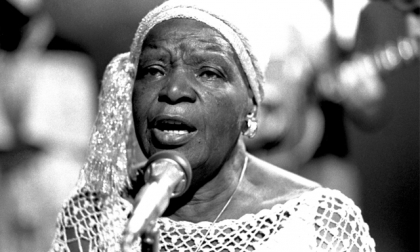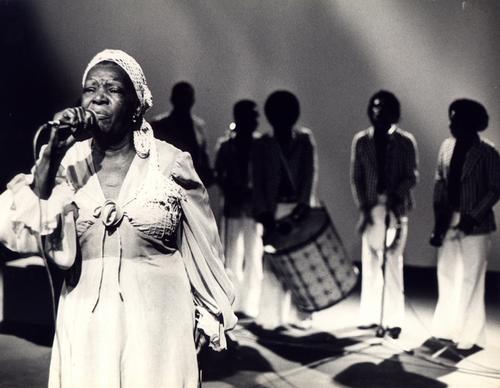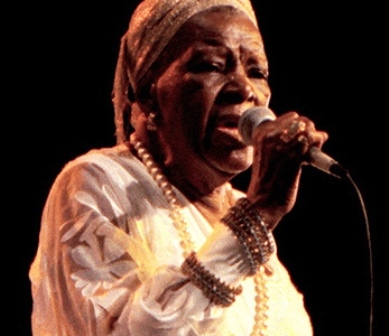Business loans for single mums in Guyana
By Neil MarksBusiness reporter, Geogetown, Guyana
A small loan has turned around Bhimwattie Sahid's fortunes
In the smouldering midday sun Bhimwattie Sahid uses a machete to prepare a patch of land where she will grow 700 sweet pepper plants.
The crop will be ready in time for Guyana's Christmas holiday season, when the peppers - which are used in a number of the South American nation's popular dishes - sell for high prices.
Mrs Sahid owns and runs a successful small farm near the border with neighbouring Suriname.
A 63-year-old single mother who struggled to bring up two girls following the death of her husband in 2003, has seen her fortunes transformed over the past four years, thanks to the introduction of a small loan scheme aimed at women like herself.
The Women of Worth (Wow) initiative, a 2010 tie-up between the Guyanese government and the Guyana Bank for Trade and Industry (GBTI), a local commercial lender, offers microfinance to single mums to start small businesses. The women are not required to put forward any collateral as a guarantee.
It has enabled Mrs Sahid to move beyond subsistence or "hand-to-mouth" farming, and instead buy more land and run it as a commercial venture.
To date she has taken out and repaid two loans, each of 260,500 Guyanese dollars ($1,250; £777), the highest amount available.
Not only has Mrs Sahid been able to extend her land and the variety of crops she grows, but the profits she has made have enabled her to build a more comfortable house, and to help her daughters financially .
"I feel proud," she says. "I don't know what would have happened to me without the Wow loan. It would have been hard."
Mrs Sahid says she is now considering taking out an additional loan to further expand her business.
We are not daunted by those seeming pitfalls”
Shaleeza ShawHead of credit, GBTI
So far 1,400 women have accessed the Wow loans, which are open to those aged between 18 and 60. They currently have an interest rate of 6%, are are repaid over a two-year period.
Participants range from unmarried teenage mums, to divorcees, widows and women who have escaped domestic abuse.
Jennifer Webster, Guyana's minister of human services and social security, says the scheme is helping the women to make an increased contribution to their local communities.
Stephane Rutherford, 40, has used loans from Wow to extend her small fruit juice cafe, based in the town of Mahaicony, on Guyana's eastern coast.
Petrina Chandra now has 50 children in her care each weekday
Thanks to an initial loan of 104,000 Guyanese dollars she was able to buy in more fruit from local producers and increase production.
A second, larger loan enabled her to start selling soup and milkshakes as well.
Ms Rutherford's increased earnings have helped her pay for her two sons' educations. Her youngest is in high school, where you have to pay exam fees, and her oldest has just completed two years of a degree in business management.
She adds that the loan has also enabled her to secure enough supplies to open her business on a daily basis.
"[Before] I wasn't even selling every day, now I am more consistent with my business," she says.
Petrina Chandra, 39, used a Wow loan to rent an apartment in the capital Georgetown and convert it into a children's day care centre for two and three-year-olds.
She now has two employees and 50 children under her care.
As the business continues to grow, Ms Chandra has more money for herself and her family.
Ms Chandra describes securing the Wow funding as "God's set up for me".
She adds that she now plans to expand and move into a larger premises.
"We're looking for the right place," she says. "I am looking in my community to see where I can get a place that's available that we can probably extend."
Growing defaults
Yet despite the successes of the Wow loans, there have been some problems, admits Shaleeza Shaw, head of credit at GBTI.
Stephane Rutherford has expanded her food business with the help of a Wow loan
In the first year of the scheme there was a repayment rate of 95%, but that dipped to 70% in the second year, and it continues to go down.
Ms Shaw says there were a number of reasons for the fall, such as women having to compete for business in the same small marketplace as others who have taken out Wow loans.
In other cases, some single mothers have to divert Wow loans for other uses, such as paying medical bills if a child becomes sick.
But that has not brought the scheme to its knees.
"We are not daunted by those seeming pitfalls," says Ms Shaw.
Although the women are already trained in the basics of financial management before they get the loans, the aim is for this training to become more extensive.
Ms Shaw also wants the single mothers to be given more support after they have set up their businesses.
Meanwhile, some commentators say that for the scheme to really work, there must be other support mechanisms in place for the women, such as free school uniforms for their children, and free transport to and from school, so that they can focus more on running their businesses.
But for successful participants like farmer Bhimwattie Sahid, it has enabled her to turn her life around.






























